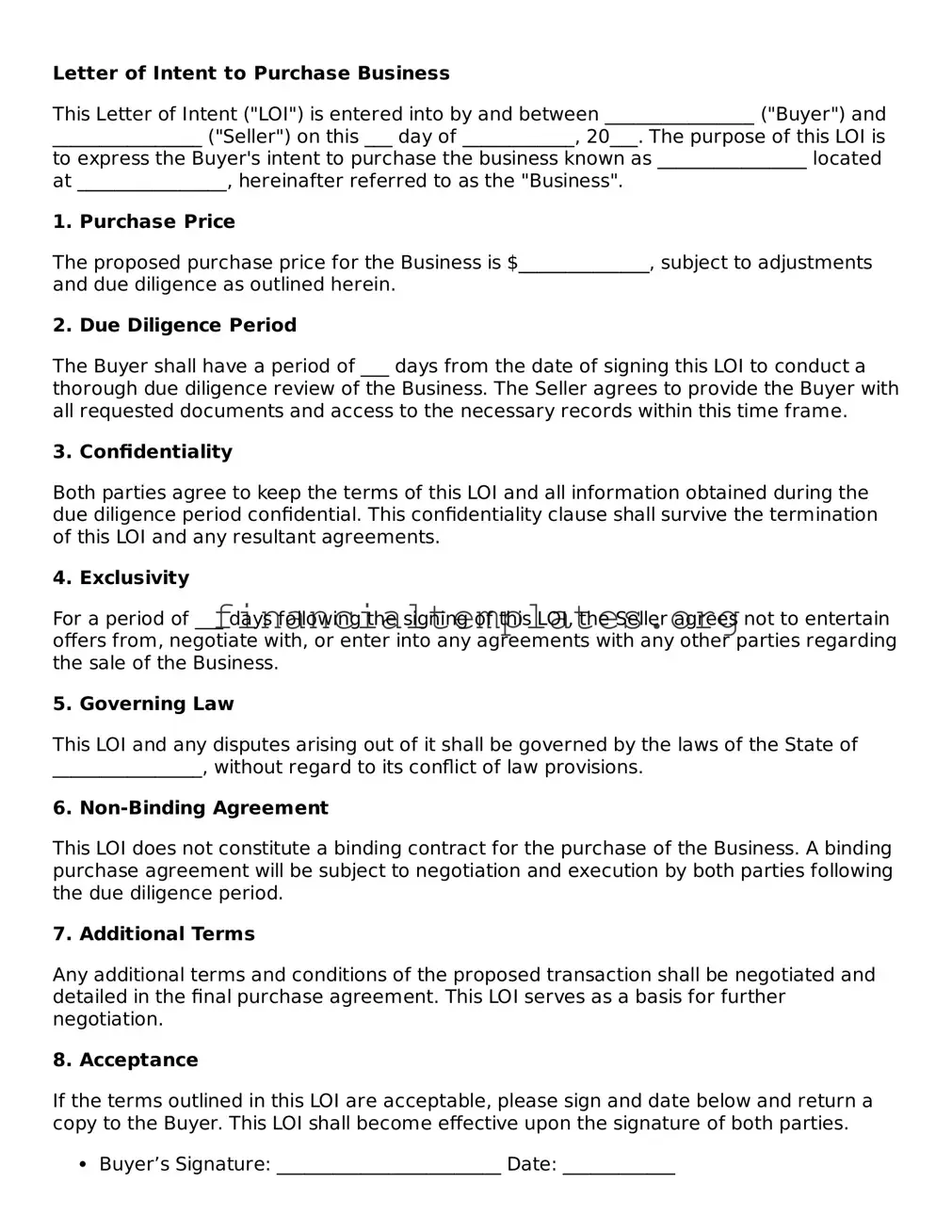Letter of Intent to Purchase Business
This Letter of Intent ("LOI") is entered into by and between ________________ ("Buyer") and ________________ ("Seller") on this ___ day of ____________, 20___. The purpose of this LOI is to express the Buyer's intent to purchase the business known as ________________ located at ________________, hereinafter referred to as the "Business".
1. Purchase Price
The proposed purchase price for the Business is $______________, subject to adjustments and due diligence as outlined herein.
2. Due Diligence Period
The Buyer shall have a period of ___ days from the date of signing this LOI to conduct a thorough due diligence review of the Business. The Seller agrees to provide the Buyer with all requested documents and access to the necessary records within this time frame.
3. Confidentiality
Both parties agree to keep the terms of this LOI and all information obtained during the due diligence period confidential. This confidentiality clause shall survive the termination of this LOI and any resultant agreements.
4. Exclusivity
For a period of ___ days following the signing of this LOI, the Seller agrees not to entertain offers from, negotiate with, or enter into any agreements with any other parties regarding the sale of the Business.
5. Governing Law
This LOI and any disputes arising out of it shall be governed by the laws of the State of ________________, without regard to its conflict of law provisions.
6. Non-Binding Agreement
This LOI does not constitute a binding contract for the purchase of the Business. A binding purchase agreement will be subject to negotiation and execution by both parties following the due diligence period.
7. Additional Terms
Any additional terms and conditions of the proposed transaction shall be negotiated and detailed in the final purchase agreement. This LOI serves as a basis for further negotiation.
8. Acceptance
If the terms outlined in this LOI are acceptable, please sign and date below and return a copy to the Buyer. This LOI shall become effective upon the signature of both parties.
- Buyer’s Signature: ________________________ Date: ____________
- Seller’s Signature: ________________________ Date: ____________
